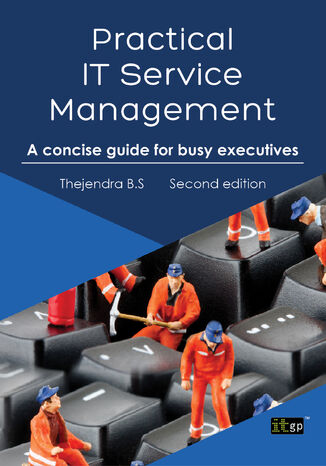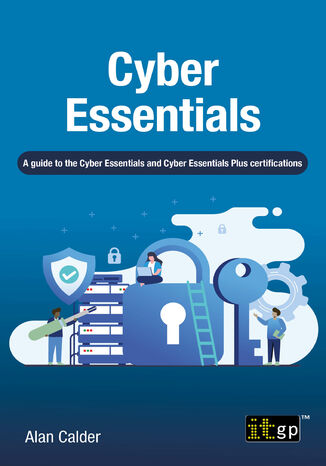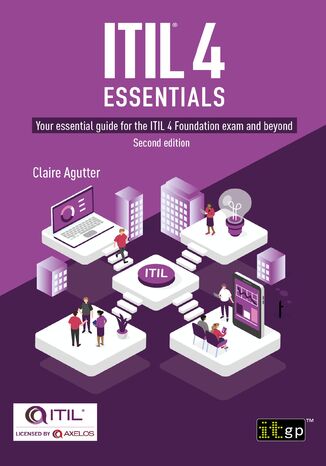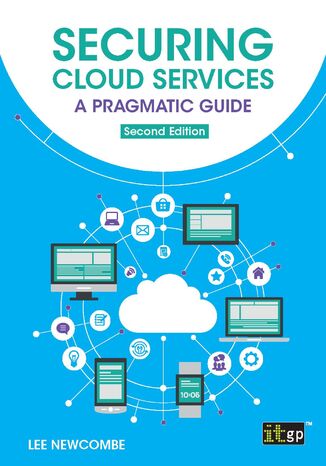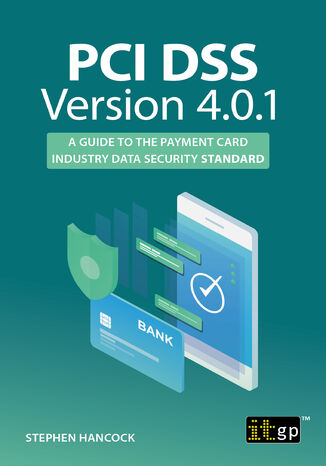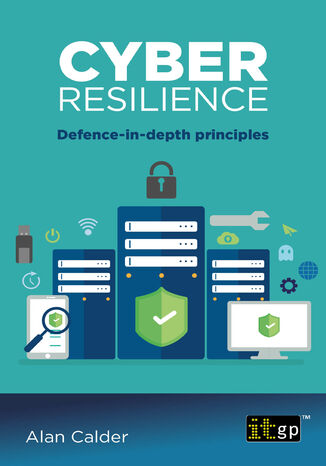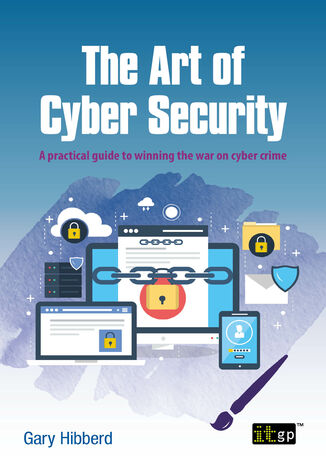Kategorien
-
- Bitcoin
- Geschäftsfrau
- Coaching
- Controlling
- E-Business
- Ökonomie
- Finanzen
- Börse und Investitionen
- Persönliche Kompetenzen
- Computer im Büro
- Kommunikation und Verhandlungen
- Kleines Unternehmen
- Marketing
- Motivation
- Multimedia-Training
- Immobilien
- Überzeugung und NLP
- Steuern
- Sozialpolitik
- Handbȕcher
- Präsentationen
- Führung
- Public Relation
- Berichte, Analysen
- Geheimnis
- Social Media
- Verkauf
- Start-up
- Ihre Karriere
- Management
- Projektmanagement
- Personal (HR)
-
- Architektura i wnętrza
- Sicherheit und Gesundheit am Arbeitsplatz
- Biznes i Ekonomia
- Haus und Garten
- E-Business
- Ekonomia i finanse
- Esoterik
- Finanzen
- Persönliche Finanzen
- Unternehmen
- Fotografie
- Informatik
- HR und Gehaltsabrechnung
- Frauen
- Computer, Excel
- Buchhaltung
- Kultur und Literatur
- Wissenschaftlich und akademisch
- Umweltschutz
- meinungsbildend
- Bildung
- Steuern
- Reisen
- Psychologie
- Religion
- Landwirtschaft
- Buch- und Pressemarkt
- Transport und Spedition
- Gesundheit und Schönheit
-
- Office-Programme
- Datenbank
- Bioinformatik
- IT Branche
- CAD/CAM
- Digital Lifestyle
- DTP
- Elektronik
- Digitale Fotografie
- Computergrafik
- Spiele
- Hacking
- Hardware
- IT w ekonomii
- Wissenschaftliche Pakete
- Schulbücher
- Computergrundlagen
- Programmierung
- Mobile-Programmierung
- Internet-Server
- Computernetzwerke
- Start-up
- Betriebssysteme
- Künstliche Inteligenz
- Technik für Kinder
- Webmaster
-
- Anthologien
- Ballade
- Biografien und Autobiografien
- Für Erwachsene
- Drama
- Tagebücher, Memoiren, Briefe
- Epos
- Essay
- Science Fiction
- Felietonys
- Fiktion
- Humor, Satire
- Andere
- Klassisch
- Krimi
- Sachbücher
- Belletristik
- Mity i legendy
- Nobelpreisträger
- Kurzgeschichten
- Gesellschaftlich
- Okultyzm i magia
- Erzählung
- Erinnerungen
- Reisen
- Gedicht
- Poesie
- Politik
- Populärwissenschaftlich
- Roman
- Historischer Roman
- Prosa
- Abenteuer
- Journalismus
- Reportage
- Romans i literatura obyczajowa
- Sensation
- Thriller, Horror
- Interviews und Erinnerungen
-
- Archäologie
- Bibliotekoznawstwo
- Filmwissenschaft
- Philologie
- Polnische Philologie
- Philosophie
- Finanse i bankowość
- Erdkunde
- Wirtschaft
- Handel. Weltwirtschaft
- Geschichte und Archäologie
- Kunst- und Architekturgeschichte
- Kulturwissenschaft
- Linguistik
- Literaturwissenschaft
- Logistik
- Mathematik
- Medizin
- Geisteswissenschaften
- Pädagogik
- Lehrmittel
- Populärwissenschaftlich
- Andere
- Psychologie
- Soziologie
- Theatrologie
- Teologie
- Theorien und Wirtschaftswissenschaften
- Transport i spedycja
- Sportunterricht
- Zarządzanie i marketing
-
- Sicherheit und Gesundheit am Arbeitsplatz
- Geschichte
- Verkehrsregeln. Führerschein
- Rechtswissenschaften
- Gesundheitswesen
- Allgemeines. Wissenskompendium
- akademische Bücher
- Andere
- Bau- und Wohnungsrecht
- Zivilrecht
- Finanzrecht
- Wirtschaftsrecht
- Wirtschafts- und Handelsrecht
- Strafrecht
- Strafrecht. Kriminelle Taten. Kriminologie
- Internationales Recht
- Internationales und ausländisches Recht
- Gesundheitsschutzgesetz
- Bildungsrecht
- Steuerrecht
- Arbeits- und Sozialversicherungsrecht
- Öffentliches, Verfassungs- und Verwaltungsrecht
- Familien- und Vormundschaftsrecht
- Agrarrecht
- Sozialrecht, Arbeitsrecht
- EU-Recht
- Industrie
- Agrar- und Umweltschutz
- Wörterbücher und Enzyklopädien
- Öffentliche Auftragsvergabe
- Management
-
- Afrika
- Alben
- Südamerika
- Mittel- und Nordamerika
- Australien, Neuseeland, Ozeanien
- Österreich
- Asien
- Balkan
- Naher Osten
- Bulgarien
- China
- Kroatien
- Tschechische Republik
- Dänemark
- Ägypten
- Estland
- Europa
- Frankreich
- Berge
- Griechenland
- Spanien
- Niederlande
- Island
- Litauen
- Lettland
- Mapy, Plany miast, Atlasy
- Miniführer
- Deutschland
- Norwegen
- Aktive Reisen
- Polen
- Portugal
- Andere
- Przewodniki po hotelach i restauracjach
- Russland
- Rumänien
- Slowakei
- Slowenien
- Schweiz
- Schweden
- Welt
- Türkei
- Ukraine
- Ungarn
- Großbritannien
- Italien
-
- Lebensphilosophien
- Kompetencje psychospołeczne
- zwischenmenschliche Kommunikation
- Mindfulness
- Allgemeines
- Überzeugung und NLP
- Akademische Psychologie
- Psychologie von Seele und Geist
- Arbeitspsychologie
- Relacje i związki
- Elternschafts- und Kinderpsychologie
- Problemlösung
- Intellektuelle Entwicklung
- Geheimnis
- Sexualität
- Verführung
- Aussehen ind Image
- Lebensphilosophien
-
- Bitcoin
- Geschäftsfrau
- Coaching
- Controlling
- E-Business
- Ökonomie
- Finanzen
- Börse und Investitionen
- Persönliche Kompetenzen
- Kommunikation und Verhandlungen
- Kleines Unternehmen
- Marketing
- Motivation
- Immobilien
- Überzeugung und NLP
- Steuern
- Sozialpolitik
- Handbȕcher
- Präsentationen
- Führung
- Public Relation
- Geheimnis
- Social Media
- Verkauf
- Start-up
- Ihre Karriere
- Management
- Projektmanagement
- Personal (HR)
-
- Anthologien
- Ballade
- Biografien und Autobiografien
- Für Erwachsene
- Drama
- Tagebücher, Memoiren, Briefe
- Epos
- Essay
- Science Fiction
- Felietonys
- Fiktion
- Humor, Satire
- Andere
- Klassisch
- Krimi
- Sachbücher
- Belletristik
- Mity i legendy
- Nobelpreisträger
- Kurzgeschichten
- Gesellschaftlich
- Okultyzm i magia
- Erzählung
- Erinnerungen
- Reisen
- Poesie
- Politik
- Populärwissenschaftlich
- Roman
- Historischer Roman
- Prosa
- Abenteuer
- Journalismus
- Reportage
- Romans i literatura obyczajowa
- Sensation
- Thriller, Horror
- Interviews und Erinnerungen
-
- Archäologie
- Philosophie
- Wirtschaft
- Handel. Weltwirtschaft
- Geschichte und Archäologie
- Kunst- und Architekturgeschichte
- Kulturwissenschaft
- Literaturwissenschaft
- Mathematik
- Medizin
- Geisteswissenschaften
- Pädagogik
- Lehrmittel
- Populärwissenschaftlich
- Andere
- Psychologie
- Soziologie
- Teologie
- Zarządzanie i marketing
-
- Lebensphilosophien
- zwischenmenschliche Kommunikation
- Mindfulness
- Allgemeines
- Überzeugung und NLP
- Akademische Psychologie
- Psychologie von Seele und Geist
- Arbeitspsychologie
- Relacje i związki
- Elternschafts- und Kinderpsychologie
- Problemlösung
- Intellektuelle Entwicklung
- Geheimnis
- Sexualität
- Verführung
- Aussehen ind Image
- Lebensphilosophien
Practical IT Service Management. A concise guide for busy executives
IT Governance Publishing, Thejendra B.S
This book provides a detailed guide to IT service management (ITSM), centered around the ITIL framework to enhance IT service delivery. It starts by introducing foundational concepts such as IT services, common challenges in IT departments, and the evolution of ITIL, particularly the 2011 edition. The early chapters cover core topics like service strategy, design, and the ITIL lifecycle, offering a strong foundation for understanding how ITIL aligns with business objectives.As the book progresses, it delves into key ITIL processes such as service desk management, incident management, problem management, change and release management, and service asset management. Each chapter explains the roles, responsibilities, and best practices for each process, providing actionable advice and real-world examples for effective application. These sections focus on improving service efficiency and handling IT challenges.The final chapters address advanced topics like service level management, financial management, supplier management, and service continuity. These insights help readers manage resources, build vendor relationships, and ensure business continuity. By the end, readers will be equipped to apply ITIL to optimize IT operations, align them with business needs, and drive continuous improvement.
Cyber Essentials. A guide to the Cyber Essentials and Cyber Essentials Plus certifications
IT Governance Publishing, Alan Calder
This book is a practical guide to achieving Cyber Essentials certification, a key step in protecting your organization from cyber threats. It starts with an overview of the Cyber Essentials scheme and explains why certification is crucial. The book covers common cyber attacks like ransomware, social engineering, and denial of service, helping you understand potential threats.It then explores essential technical controls needed for certification, such as firewalls, secure configurations, user access control, and malware protection. It also highlights best practices like managing security updates to keep systems secure. Each chapter offers actionable advice on implementing these controls, emphasizing their role in strengthening your cybersecurity framework.The book concludes with a detailed look at the Cyber Essentials certification process. It guides you through preparing for certification, completing the checklist, and undergoing the assessment. Additional resources and tips for Cyber Essentials Plus certification are included for those seeking further guidance.This comprehensive guide provides the knowledge and tools to secure your organization, achieve certification, and maintain strong cybersecurity resilience.
ITIL(R) 4 Essentials. Your essential guide for the ITIL® 4 Foundation exam and beyond
IT Governance Publishing, Claire Agutter
The ITIL® 4 Essentials guide offers a comprehensive introduction to IT service management, focusing on ITIL® 4 practices and principles. Readers gain an understanding of the four dimensions of service management—organizations, people, information, technology, partners, and suppliers—which are key to delivering effective IT services.The guide highlights ITIL® 4’s seven guiding principles, such as focusing on value, collaborating, and working holistically. These principles are essential for creating effective service management strategies. Readers will learn how to integrate these principles into their daily operations, leading to enhanced service delivery and better alignment with business goals. Additionally, the book explores the importance of the Service Value System (SVS) and the Service Value Chain, offering a detailed look at how these frameworks drive continuous improvement and value creation.Lastly, the book covers essential ITIL® 4 practices like continual improvement, change management, and incident management. Each practice is explored in depth, providing practical guidance for implementation. The final chapters offer exam preparation tips, ensuring readers are ready for the ITIL® Foundation exam, with sample questions and strategies for success.
IT Governance Publishing, Lee Newcombe
Cloud computing plays a critical role in modern business, but with it comes a host of security challenges. This book explores the intricacies of securing cloud services, starting with foundational concepts of cloud computing and moving into specific service and deployment models. It provides insights into balancing security benefits with potential risks such as availability issues, shadow IT, and information leakage. The book goes on to focus on security threats, from hackers and insiders to government entities, while offering strategies to mitigate these risks. The practical approach continues with a deep dive into security architecture, providing a structured model to secure cloud environments across IaaS, PaaS, SaaS, and more. Further, it examines the regulatory landscape, including compliance requirements, privacy concerns, and data protection laws that impact cloud service security. Finally, the book concludes with projections about the future of cloud security and emerging challenges. Readers will gain not only the theoretical foundations but also real-world insights that they can apply to strengthen their cloud service security.
PCI DSS Version 4.0.1. A guide to the payment card industry data security standard
IT Governance Publishing, Stephen Hancock
This book provides an essential resource for anyone involved in managing or ensuring PCI DSS compliance. It begins by introducing the Payment Card Industry Data Security Standard (PCI DSS), explaining its importance, and the regulatory framework that governs it. Readers will understand how to assess their organization’s compliance status and the vital steps to avoid data breaches. The book offers a comprehensive exploration of compliance programs and how organizations can design their own effective strategies.The text then dives into the specifics of PCI DSS, focusing on its core components and requirements. Key chapters describe how to comply with and maintain compliance, as well as how to use tools like the PCI self-assessment questionnaire (SAQ). Real-world case studies of cardholder data breaches highlight the consequences of non-compliance. Readers will also learn about the integration of PCI DSS with other standards like ISO/IEC 27001.Throughout, this guide emphasizes practical advice for implementing key security frameworks such as the Software Security Framework (SSF) and Point-to-Point Encryption (P2PE). By the end of the book, readers will have a clear roadmap to not only meet but sustain PCI DSS compliance and strengthen their organization's data security practices.
IT Governance Publishing, Claire Agutter
This book offers a detailed exploration of Service Integration and Management (SIAM™), providing insights into its frameworks, structures, and practical applications. It starts by covering the core principles of SIAM™, from its historical context to its role in optimizing service integration across multiple providers. The book then dives into the SIAM roadmap, outlining key stages such as discovery, strategy, planning, and execution, all essential for successful service management.Readers will gain an understanding of different SIAM structures, including externally sourced, internally sourced, and hybrid models, along with their respective advantages and challenges. It also explores how SIAM aligns with other service management practices like ITIL, COBIT, Lean, and Agile, offering a comprehensive approach to managing complex service ecosystems.The book places special emphasis on the roles and responsibilities within a SIAM ecosystem, including those of service providers, integrators, and customers. It also highlights the importance of cultural change, collaboration, and governance for effective SIAM implementation.Finally, readers will learn to identify and address common challenges and risks, equipping them with strategies to overcome obstacles and ensure smooth integration within their organization.
Cyber Resilience. A Comprehensive Guide to Understanding and Implementing Cybersecurity Principles
IT Governance Publishing, Alan Calder
In today’s rapidly evolving digital landscape, cybersecurity is essential for protecting organizations from cyber threats. This book provides a thorough guide to building cyber resilience, starting with an in-depth understanding of the ever-changing cyber threat landscape. It covers foundational principles such as risk management, security controls, and defense-in-depth strategies, giving readers the knowledge needed to secure digital systems effectively.The book then delves into actionable cybersecurity controls, offering insights on asset management, identity and access control, encryption, and incident response management. Each section includes practical tips for implementation, ensuring that readers can apply these strategies in real-world scenarios. The goal is to help organizations not only understand cybersecurity but also to establish robust security policies and protocols to prevent and mitigate potential risks.Finally, the book emphasizes the importance of continual improvement and monitoring to maintain a resilient cybersecurity framework. It highlights the need for regular audits, vulnerability scanning, and staff training to adapt to new threats. By the end, readers will be equipped to build and sustain a resilient cybersecurity strategy that ensures long-term protection and business continuity.
The Art of Cyber Security. A practical guide to winning the war on cyber crime
IT Governance Publishing, Gary Hibberd
This book redefines cyber security through the lens of creativity and classical strategy. It begins by exploring the mindset of the cyber defender as both artist and martial artist, highlighting the importance of intuition, flow, and individual perspective. It challenges rigid educational models and argues for a more adaptive, expressive approach to security thinking.Building on this foundation, the second part interprets Sun Tzu’s The Art of War in a cyber context. Each chapter reframes traditional military concepts—deception, preparation, leadership, and adaptability—through the realities of digital threats. The text emphasizes how timeless strategies apply to the modern information battlefield.By blending philosophy, history, and practical insight, the book offers a unique take on digital defense. It invites readers to reflect on their approach, question assumptions, and embrace both logic and creativity. This is not just a guide to threats and tactics, but a call to rethink what it means to be a cyber security professional today.

